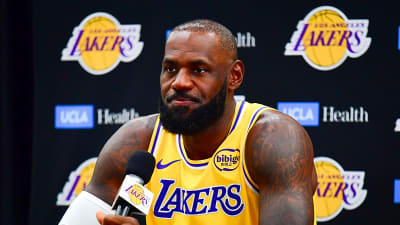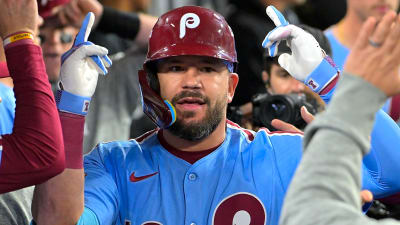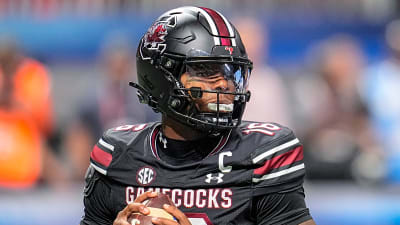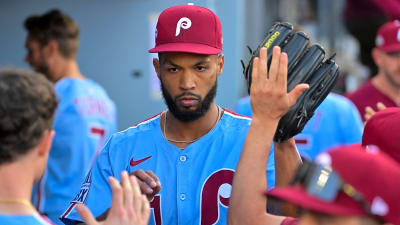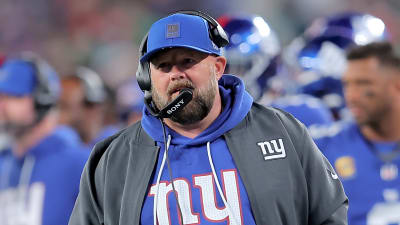It’s been 25 years since Thomas Campbell released “The Seedling” and put his name on the map as one of surfing’s great modern filmmakers. The film, principally starring Joel Tudor, was the first of a three-film run that convinced the surfing industrial complex at the time that white thrusters, black wetsuits and three to the beach wasn’t all that. Campbell is an artist through and through and wanted to paint with color.
He followed up “The Seedling” with “Sprout” in 2004 and “The Present” in 2009. Both three films offered a seismic shift in the consciousness around how to ride a surfboard and what surfboard to ride. Presenting surfing through a different, perhaps more pure, lens, there were no quick cuts, no punk rock anthems, no pumping down the line and flaying around. All three of his films exemplified surf style of the highest order, paying homage and respect to tradition, while always looking forward. Then Campbell gracefully kicked out from making surf movies.
But now, ten years in the making, Campbell is on the precipice of releasing his new film, “Yi-Wo.” With a cast of characters that includes Ryan Burch, Craig Anderson, Dave Rastovich, Joel Tudor, Bryce Young and too many more to keep listing here, the film showcases an impeccably stylish, timeless brand of surfing combined with an avant garde twist that in some ways is a nod to the 1973 surrealist film “The Holy Mountain” by Mexican artist Alejandro Jodorowsky. Filmed primarily by Campbell, Dave Homcy, Scott Soens, Tyge Landa and Chris Bryan, the cinematography is as visually stunning as the surfing and art direction. Campbell even created the soundtrack for the project.
Currently figuring out a release plan for the new film, as well as potential opportunities to bring his past films to a streaming service, because of the size and scope of “Yi-Wo,” as well as the excitement around its eventual release, SURFER sat down with Campbell for a deep dive. Here’s what he had to say:
What was the genesis of the film?
When I finished “The Present” it was such a big thing to do, I was just like, I’m not gonna do that again. But I say that after every surf movie I’ve made. Eventually I was like it would be fun to do this or that. And at that time I was part of a film company with Chris Malloy and Jack Johnson called Woodshed Films. Chris and I came up with the idea to do a move and we were each going to different parts, as well his brother Keith and my wife Tiffany. I went to Morocco to start the project with Dave Rastovich, Lauren Hill, Ryan Burch and Trevor Gordon. We had a great trip and I was really psyched on what we captured. Chris ended up getting involved in some another film and the project didn’t really end up going anywhere, but I had this great footage and figured I could roll it into something new. So that’s sort of the origin story for Yi-Wo.
So it’s been about ten years since that trip, how were you able to stay focused and keep working on the film over all that time?
I’ve always been a better long-term type person, and I feel like I’m kind of like a rock tumbler of sorts, like I put ideas in there, jagged rocks, and if they sit in there long enough, they come out round and smooth. I just like that approach. I feel like there’s a maturation in this new film that wouldn't have been as dynamic and worked over if I didn't have the time to get there.
Can you explain that a little more, what were you able to work through during that time?
Coming up with the look and the balance, the subplot and all the little things. I feel like the time has helped it. I feel like it's a complete departure from the movies that I made before, which was the intention.
What’s something that’s different about this film than your previous films?
In a lot of ways, I think about my first three surf film as somewhat educational. You know, people weren't that knowledgeable about traditional longboarding. For example, with Joel Tudor’s guidance making “The Seedling,” we were able to introduce that to a broader audience. “Yi-Wo” is different than “Sprout” or “The Seedling or “The Present” in the sense that we didn’t have to educate people about the different approaches to surfing. Maybe it was more of a celebration? It's a different animal altogether.
How have things changed since you released your earlier films?
It’s a new paradigm. Like DVDs. I used to sell DVDs, right? And now DVDs aren’t a thing. So, I’m figuring out a new paradigm for that. I’ve basically spent my money making the film without sponsors because I don’t really understand how sponsorship could work in this new construct. I was making a skateboarding movie, "Ye Olde Destruction," at the same time. Then, eight years ago, I became a father. So all of those things kind of converged and I tried to be the best dad I could and balance everything. I decided to finish the skateboard movie before the surf movie, so I did that. The whole time I was still chipping away at making the "Yi-Wo" film. And, you know, I thought it was going to be done five years ago. But no.
We’ve come a long way since surf movies on VHS or DVD.
The way people consume media today has changed so much. Everybody's attention span is 30 seconds, or whatever. This kind of surfing, like what you see from Rasta or Burch or whoever, you need to sit down and absorb it, soak it in and watch it to really absorb (take this out) and appreciate the dynamic of what they’re doing. And that may be very counter to how young people are consuming their surfing content on a platform like Instagram … one trick, one barrel, then you keep scrolling. I wonder if it’s just that kids today haven’t been exposed to longer surf films like they used to? I remember being a kid and watching Bruce Brown, Jack McCoy, or Runman movies, and you’d sit and watch them, really soak it in. And then you internalized it. I don’t know if that happens today?
How did you go about selecting the surfers in the film?
It's a balancing act, a kind curation . This person brings this, and this person brings this approach, and they're friends, and the vibe would be cool. And, you know, just trying to figure out the combinations. In the end, I feel like those people are my favorite surfers, and I'm so thankful. I mean, the only person that wasn't in the movie that I wanted to be in the movie was Steph [Gilmore]. I tried, but at the time she was busy on the world tour. I would have liked there to be more of a female presence in the movie.
There are not a ton of modern, young surfers that I'm that actually interested in, maybe Tosh Tudor. I like his approach. But I'm so attracted to the approaches of surfers like Craig [Anderson] ,Alex [Knost] Karina [Rozunko] or Joel [Tudor]. Does it get any better? I don't know. I'm incredibly grateful to have those people performing on the level that they're performing.
What is it about those guys that’s so attractive to you?
I just really dig there varied approaches and styles. What they equal together is kind of like a band. Each instrument can add to the breadth of the sound. I also like how their styles dovetail and contrast the many different moods the ocean will allow. If I can film backlit, offshore waves every day, that is ideal. Most people want the opposite. They want front lit, you know? But most people that are filming surfing are trying to sell a product and document people using that product. That's not what I am doing with my films. It’s more of a celebration of surfing and our strange existence on this weird planet. Luckily, a lot of the situations that we got into had really cinematic looking waves or wind experiences. And then there’s this evolution of having time and putting in thought and evolving ideas. All of that is part of this big process of making this film.
A big part of your films has always been the music, how did you approach that on this film?
I’ve made and produced a bunch of records over the last 27 years or so. Early on I had the record label Galaxia with my partner Greg Lamson and we put out a lot of different things with Tommy Guerrero and Ray Barbee. There were all kinds of different things, Bonnie Prince Billy, Black Heart Procession, and a bunch of different stuff. So, I’m very familiar with producing records. I’m not a great musician, more of a producer. When it came to the music for the film, I knew I wanted it to be original and started making some music with my friend Monty Vallier in his studio, Ruminator Audio, in San Francisco.
I knew the feeling for the film that I wanted, so we started making music in that direction and it eventually built momentum and turned into a musical project we called Cone Cinq. We probably recorded an upwards of 25 tracks. Some are pretty ambient and loose, but we created quite a few pieces of music. The transitions in the film are music we made, and then two of the parts in the film are music that we made as well.
Got any good stories from the studio?
This is a good story. I was on the Big Island at Cliff Kapono’s house. It was getting dark and this sound started happening outside. I asked Cliff what it was and he explained it was an invasive species of frog from Puerto Rico. It kind of sounded like R2D2, and I was like, oh, that’s cool. So, I went in the yard with my phone and started recording the sound. It didn’t sound like a frog at all. I went home and brought the frog recording to Monty to make something out of.
Years before that I was driving over to San Jose one day and I was listening to the radio. There was a guy being interviewed that had gone to UCSC and been involved in music production. He had recorded some frogs in a pond in Santa Cruz and then made beats out of the frog sounds. Then he gave it to the band New Order in the UK and they made a song out of it. So, I was inspired by that and turned these Big Island invasive frog sounds into music. The track ended up being used in a part of the film, a slow motion air part with Craig Anderson and Ozzy Wright. I think Tommy Guerrero played drums on it. I might have played keys and guitar, and my friend Monty was on bass and synth.
I'm really excited about the soundtrack. I'm not going to give a lot of specifics about what's on the soundtrack, I want to keep everything as under wraps as much possible until people see it, but I'm excited about it.
Do you feel like the film has a statement to make?
I feel like we're in such a strange period in history, there's so much tension and kind of corporate overlording—of this planet and our political system. I feel like the film isn't directly, obviously political, but it works on a multiple dimensional level. We’re multiple dimensional beings and and I wanted to kind of address some different ideas of life and death and how we're relating to this planet, how we may be relating to the news that's thrust upon us, and also in a more poetic way, interpret it or digest it as it’s relatable to yourself. It's like, hopefully this kind of subplot gives people a chance to think about how it relates to their life.
I've just tried to expand into a new area, in a new way of communication, and not be related to anything. I specifically didn't use any English language in any of the soundtrack. And I tried to use music that is generally not known by people, so the whole experience would be new. When you're experiencing it, it's just that experience. Instead of like, ‘Oh, I remember this song, and this reminds me of that.’ I didn't want that at all. I wanted to have a wholly encompassing new experience. So that's what I aimed for.
More must-reads:
- Could Mets lose Pete Alonso to division rival?
- RAM has its first driver for new NASCAR Truck Series team
- The 'Oldest starting QB by NFL team' quiz
Breaking News
Trending News
Customize Your Newsletter
 +
+
Get the latest news and rumors, customized to your favorite sports and teams. Emailed daily. Always free!
